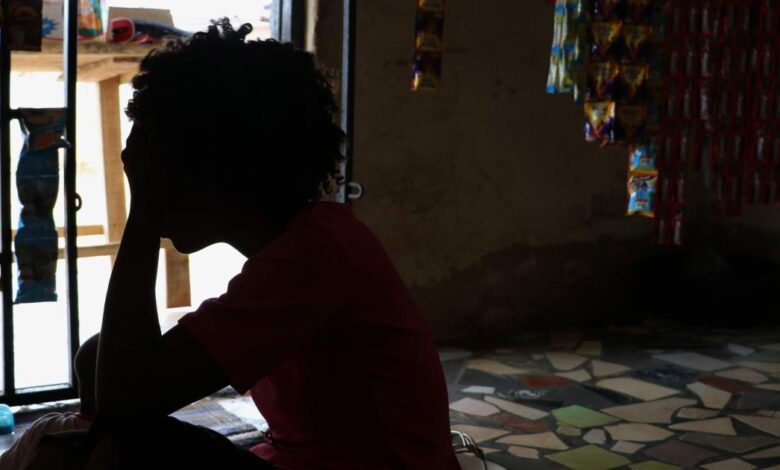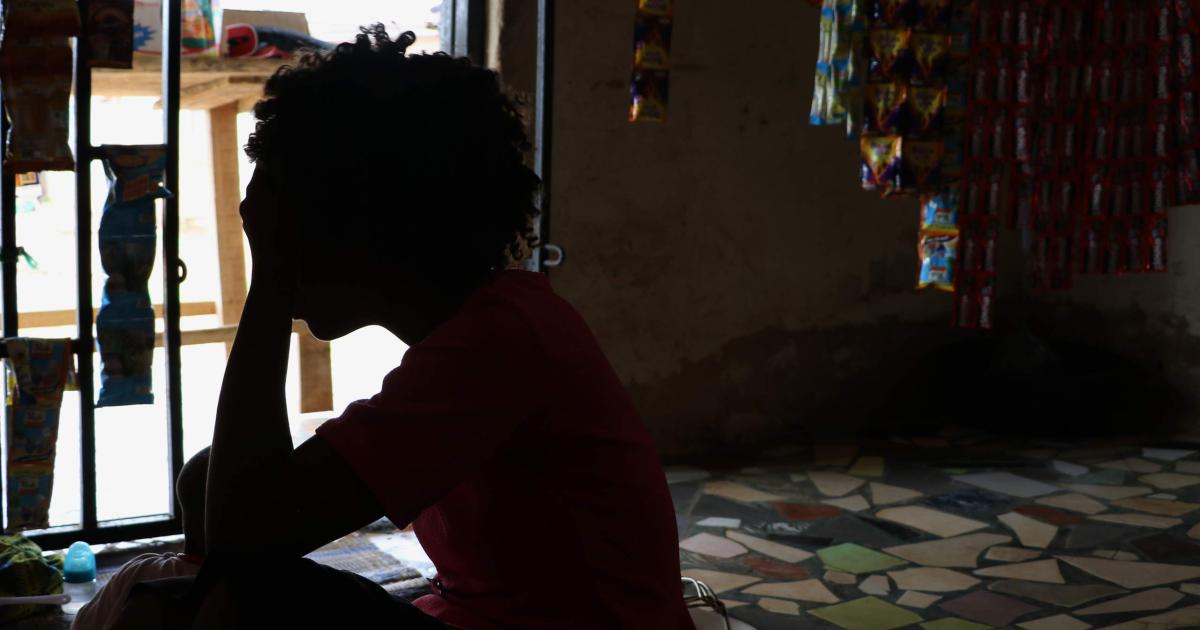
The Deadly Journey to the Gulf
The Deadly Journey to the Gulf: This phrase conjures images of perilous landscapes and treacherous seas, but it’s more than just a dramatic title. It’s a journey through history, geography, and human experience, exploring the myriad dangers faced by those who have braved the routes to the Gulf region throughout the ages. From ancient caravans battling scorching deserts to modern migrants facing the perils of human trafficking, this story delves into the harsh realities and the human cost of reaching this vital region.
We’ll explore the historical context of these perilous journeys, examining the shifting dangers from past centuries to the present day. We’ll uncover the geographical and environmental hazards, from unforgiving deserts and stormy seas to the political instability and social risks that make this journey so deadly. We’ll even look at the economic factors that drive vulnerable people into dangerous situations and the modern-day safety measures, however imperfect, that attempt to mitigate the risks.
Historical Context of Dangerous Gulf Journeys
The Gulf region, encompassing the Persian Gulf and Arabian Gulf, has historically been a crossroads of civilizations, attracting traders, explorers, and conquerors for millennia. However, these journeys were often fraught with peril, resulting in significant loss of life and shaping the very nature of regional interactions. The inherent dangers, ranging from environmental challenges to political instability, have evolved over time, creating a complex and often deadly history of travel to this strategically vital area.The historical significance of Gulf journeys is intrinsically linked to the region’s vast resources, primarily pearls and later oil.
The allure of these riches fueled intense competition and risk-taking, with individuals and nations willing to brave treacherous conditions for potential reward. The perilous nature of these journeys contributed significantly to the development of seafaring technology and navigational skills, as well as the establishment of trade networks and cultural exchange, albeit often at a heavy human cost.
The Perils of Pearl Diving and Early Maritime Trade
For centuries, the Gulf’s pearl fisheries were a major source of wealth. The process of pearl diving was exceptionally dangerous, involving deep-sea dives with limited equipment, often leading to drowning, decompression sickness (“the bends”), and other injuries. Early maritime trade also faced numerous hazards. Navigation was challenging due to unpredictable weather patterns, shallow waters, and the lack of sophisticated navigational tools.
Pirates and rival trading groups frequently attacked vessels, leading to violence, theft, and death. Historical accounts from the 18th and 19th centuries detail numerous shipwrecks and attacks, painting a vivid picture of the risks involved. For example, accounts from British East India Company voyages frequently mention storms, navigational difficulties, and encounters with pirates along the Gulf’s treacherous coastline.
The Impact of Political Instability and Warfare
Political instability and warfare have consistently posed significant threats to Gulf journeys. The region’s strategic location and rich resources have made it a focal point for conflict throughout history. From ancient battles between empires to modern-day conflicts, the volatility of the political landscape has created dangerous conditions for travelers. The Iran-Iraq War (1980-1988), for instance, severely disrupted maritime trade and caused significant casualties among civilian and military vessels.
The ongoing conflicts and tensions in the region continue to pose risks to navigation and travel, highlighting the enduring nature of this particular challenge.
Evolving Dangers: A Comparison of Past and Present
While the specific dangers faced on Gulf journeys have evolved, the fundamental risks remain. Past challenges, such as navigational difficulties and pirate attacks, have been mitigated to some extent through technological advancements and increased international cooperation. However, new threats have emerged, including the dangers of modern warfare, terrorism, and the environmental consequences of pollution and climate change. The increased reliance on oil tankers has introduced new environmental risks, with the potential for catastrophic oil spills and their devastating consequences.
Furthermore, the geopolitical complexities of the region continue to create uncertainty and volatility, impacting the safety and security of travelers. The comparison reveals a constant interplay between mitigating older risks and adapting to new ones, reflecting the dynamic and ever-changing nature of the challenges associated with journeys to the Gulf.
Political and Social Risks
Traveling to the Gulf region, while offering unique cultural and historical experiences, presents significant political and social risks that travelers must carefully consider. The inherent instability in some areas, coupled with cultural nuances, can easily lead to dangerous situations if not properly understood and addressed. This section will Artikel some of the key political and social factors that contribute to these risks.The political landscape of the Gulf is complex and frequently volatile.
Several nations within the region have experienced periods of significant unrest, armed conflict, or political upheaval, directly impacting the safety and security of travelers. These events often lead to travel advisories, border closures, and increased security measures, potentially disrupting travel plans and placing travelers in harm’s way.
Thinking about the deadly journey to the Gulf, the risks involved, and the sheer weight of history, it’s almost surreal to consider the news that the US government seized over 11000 non-classified documents from Trump’s home – read more about it here. This whole situation feels like a bizarre distraction from the far more pressing issues of global conflict and the perilous journeys people undertake to escape them.
It makes you wonder what other secrets are out there, adding another layer of complexity to the already dangerous journey to the Gulf.
Political Instability and Conflicts
The ongoing conflicts and political tensions in several Gulf nations pose a direct threat to travelers. For example, the Yemen conflict has spilled over into neighboring countries, creating instability and security concerns along borders and impacting regional air travel. Similarly, past regional conflicts have resulted in the disruption of travel routes, evacuations of foreign nationals, and increased risk of terrorist attacks or cross-border violence.
These events highlight the importance of monitoring regional news and adhering to official travel advisories before and during any trip to the Gulf. Travelers should also be aware of the potential for protests or demonstrations, which can quickly escalate into violent confrontations.
Impact of Political Events on Traveler Safety
Several specific political events have demonstrably impacted traveler safety in the Gulf. The 2011 Arab Spring uprisings, for instance, led to widespread civil unrest and violence in several Gulf states, causing significant disruptions to travel and putting many foreign nationals at risk. More recently, regional tensions and geopolitical shifts have created uncertainty, leading to increased security measures at airports and border crossings and heightened concerns about potential terrorist attacks.
These events underscore the need for travelers to remain informed about current events and adapt their travel plans accordingly. Regularly checking official government travel advisories and news sources is crucial for assessing the current risk level.
The deadly journey to the Gulf, fraught with peril and uncertainty, often mirrors the high-stakes drama of political maneuvering. Thinking about the intense pressure and calculated risks involved, it made me think about the fictionalized political battles shown in film and TV – check out this great list of the best film and tv featuring fictional american elections the best film and tv featuring fictional american elections for some compelling examples.
The parallels between those fictional campaigns and the very real dangers faced in the Gulf are surprisingly strong, highlighting the human cost of both political ambition and military conflict.
Social Factors Increasing Risk
Beyond political instability, social factors also significantly contribute to the risk of dangerous encounters for travelers. Cultural misunderstandings, stemming from differing social norms and customs, can easily lead to unintentional offenses or conflicts. For example, certain forms of public behavior acceptable in one culture might be considered highly inappropriate or even illegal in another. Furthermore, the level of crime, while varying across the region, can pose a threat to travelers, particularly in crowded areas or during nighttime hours.
Petty theft, scams, and more serious crimes have all been reported. Understanding and respecting local customs and taking precautions against crime are essential for minimizing risks.
Economic Factors and Human Trafficking

The perilous journey to the Gulf states is often fueled by stark economic disparities. For many migrants and workers, the promise of higher wages, even if fleeting or illusory, outweighs the inherent dangers of illegal crossings, exploitative employers, and the ever-present risk of human trafficking. The desperate need to escape poverty, lack of opportunities in their home countries, and the pressure to support families often drive individuals to take these risks, making them exceptionally vulnerable to exploitation.The allure of a better life in the Gulf, coupled with the often-unrealistic expectations fueled by recruiters and human traffickers, creates a perfect storm for exploitation.
Traffickers prey on this vulnerability, preying on individuals with limited education, resources, or social support networks. They exploit the desperation of migrants by promising lucrative jobs, safe passage, and other false promises, trapping them in cycles of debt bondage and forced labor.
Methods of Exploitation by Human Traffickers
Human traffickers employ a range of manipulative and coercive tactics to control their victims. These methods often involve deception, debt bondage, and physical or psychological coercion to ensure compliance. Victims are often forced into situations where they are completely reliant on their traffickers for everything from food and shelter to legal documentation and transportation. This dependence makes it incredibly difficult for them to escape.
The perilous journey to the Gulf, fraught with danger and uncertainty, weighs heavily on my mind. The economic instability adds another layer of complexity; I keep wondering, as fuel costs skyrocket, if is America already in recession , further impacting the already precarious situation for those making this dangerous trek. Ultimately, the deadly journey to the Gulf remains a stark reminder of the human cost, amplified by global economic woes.
The traffickers might seize passports, withhold wages, or threaten violence against the victims or their families back home. Furthermore, the traffickers often operate in networks, making it harder to track them and prosecute them. The lack of legal protection and support for migrant workers in some Gulf states exacerbates the situation, allowing traffickers to operate with relative impunity.
Strategies Used to Lure and Control Victims
The following are some of the common strategies employed by human traffickers to lure and control their victims:
- False Promises of Employment: Traffickers advertise high-paying jobs that rarely materialize. They might exaggerate the benefits, promising luxury accommodations, generous salaries, and rapid career advancement.
- Debt Bondage: Victims are often forced into debt through inflated recruitment fees, travel costs, or other fabricated charges. This debt is then used to control and exploit them, making it impossible to leave their exploitative situation without paying back an often insurmountable amount.
- Confiscation of Documents: Passports, visas, and other important documents are seized to prevent victims from leaving or seeking help. This renders them completely dependent on their traffickers.
- Threats and Violence: Physical and psychological abuse is commonly used to maintain control and prevent escape attempts. This includes threats against victims and their families.
- Isolation and Restriction of Movement: Victims are often kept isolated from others, preventing them from seeking help or reporting their situation. Their movements are restricted, limiting their ability to communicate with the outside world.
- Exploitation of Legal Gaps: Traffickers exploit loopholes in immigration laws and labor regulations to avoid detection and prosecution. They often leverage the vulnerabilities of undocumented workers.
Modern-Day Challenges and Safety Measures: The Deadly Journey To The Gulf
The journey to the Gulf region, while offering immense opportunities, remains fraught with challenges for travelers. Modern-day risks extend beyond the historical dangers, encompassing new threats demanding innovative safety measures. Understanding these challenges and the effectiveness of implemented solutions is crucial for anyone considering travel to this dynamic region.Despite improvements, significant safety concerns persist. These include political instability in certain areas, the ever-present risk of crime, and health concerns related to the climate and potential exposure to diseases.
Moreover, the complexities of navigating different cultural norms and legal systems add another layer of potential difficulties.
Improved Infrastructure and Transportation
Enhanced infrastructure plays a pivotal role in mitigating travel risks. Improved road networks, equipped with better lighting and emergency services, have reduced the incidence of accidents in some areas. Similarly, advancements in air travel, including stricter security protocols and improved aircraft maintenance, have significantly enhanced safety for air passengers. The development of modern, well-maintained ports and improved maritime security measures have also reduced risks associated with sea travel.
However, the effectiveness varies across the Gulf region, with some areas lagging behind in infrastructure development. For instance, while major cities often boast excellent road networks, remote areas may still have inadequate infrastructure, increasing the risk of accidents and delays.
Enhanced Security Protocols and Measures
Gulf states have invested heavily in enhancing security protocols, including increased police presence in tourist areas, advanced surveillance systems, and stricter border controls. These measures aim to deter crime and terrorism, creating a safer environment for travelers. The effectiveness of these measures varies, depending on the specific location and the nature of the threat. While major cities typically benefit from robust security, less populated areas might still face challenges.
Furthermore, the effectiveness is also influenced by factors such as the level of cooperation between security agencies and the availability of resources.
Health and Safety Awareness Campaigns
Many Gulf countries now run comprehensive health and safety awareness campaigns targeting both locals and tourists. These campaigns provide crucial information on issues such as heatstroke prevention, food safety, and disease awareness. The campaigns utilize diverse media channels, including television, social media, and public service announcements, aiming to increase awareness and promote safe practices. The effectiveness of these campaigns depends heavily on community engagement and the clarity of the information disseminated.
While raising awareness is crucial, the success of these campaigns also hinges on the availability of readily accessible healthcare services and the public’s ability to act upon the information provided. For example, providing readily available information on heatstroke prevention is only effective if travelers are also able to access readily available cooling centers or medical facilities in case of emergencies.
Personal Accounts and Narratives

The perilous journey to the Gulf is not merely a collection of statistics; it’s a tapestry woven with individual threads of hope, fear, and resilience. Behind each visa application lies a personal story, a unique narrative of hardship and aspiration. To truly understand the gravity of these journeys, we must delve into the lived experiences of those who dared to embark on them.
Aisha’s Journey: The Weight of Expectation
Aisha, a young woman from a small village in Bangladesh, left behind her family and a life of quiet poverty, driven by the promise of a better future. She envisioned sending money home, lifting her family from the crushing weight of debt. The journey itself was a harrowing ordeal. Overcrowded boats, indifferent smugglers, and the constant fear of discovery chipped away at her spirit.
The physical toll was immense: sleep deprivation, malnutrition, and the constant anxiety left her weak and vulnerable. Upon arrival in Dubai, the reality of her situation hit her hard. The promised job as a domestic worker turned out to be far more demanding and less lucrative than advertised. The emotional burden of being so far from home, coupled with the physical exhaustion, pushed Aisha to the brink of despair.
She found solace only in the occasional phone call to her family, a brief respite from the harsh realities of her new life. The weight of expectation, the pressure to succeed, became an almost unbearable burden.
Omar’s Escape: Unexpected Dangers, The deadly journey to the gulf
Omar, a Syrian refugee, embarked on a treacherous journey across the desert, hoping to reach the relative safety of the Gulf. He joined a group of fellow refugees, guided by a smuggler who promised safe passage. However, their journey took a dangerous turn when their vehicle broke down in the remote expanse of the desert. The extreme heat, lack of water, and the looming threat of bandits created a desperate situation.
Omar witnessed firsthand the fragility of human life in the face of unforgiving circumstances. Several members of their group succumbed to dehydration and exhaustion. The psychological trauma of witnessing death and the constant fear for his own survival left lasting scars. The physical toll of the ordeal, including severe sunburns and dehydration, was only part of the burden.
The mental anguish of the experience continued to haunt him long after he reached the relative safety of the city.
The Impact of Trauma
The physical and emotional scars of these journeys are often profound and long-lasting. The trauma of witnessing violence, enduring hardship, and experiencing exploitation can lead to post-traumatic stress disorder (PTSD), depression, and anxiety. The constant fear for one’s safety, coupled with the isolation and cultural shock of a new environment, can exacerbate these mental health challenges. Many individuals struggle to integrate into their new lives, burdened by the memories of their arduous journeys.
The long-term consequences extend beyond individual suffering, impacting families and communities back home. The stories of Aisha and Omar serve as a stark reminder of the human cost associated with these dangerous journeys. Their narratives underscore the need for greater protection and support for vulnerable migrants, highlighting the importance of addressing the root causes of migration and ensuring safe and humane migration pathways.
Visual Representation of Dangers
The journey to the Gulf, while offering the promise of a better life, is fraught with peril. Visualizing these dangers helps us understand the immense challenges faced by migrants. Two contrasting images, one depicting a specific hazard and the other a moment of resilience, powerfully illustrate the extremes of this experience.
A Sandstorm Engulfs the Caravan
Imagine a swirling vortex of sand, a chaotic ballet of ochre and brown, obscuring the sun and swallowing the landscape whole. This is not a gentle desert breeze; this is a sandstorm, a brutal force of nature that reduces visibility to near zero. The image shows a caravan of vehicles – battered trucks and overloaded SUVs – struggling against the onslaught.
The vehicles are barely visible through the swirling sand, their headlights like feeble stars in a stormy night. Human figures, hunched and small, are barely discernible, their forms swallowed by the tempestuous sand. The air is thick with grit, a suffocating blanket that stings eyes and fills lungs. The overall atmosphere is one of desperate struggle against the overwhelming power of nature, a fight for survival against an implacable foe.
The oppressive weight of the sand, the choking dust, and the uncertainty of the future are palpable in this image. The stark, almost monochromatic palette, broken only by the occasional glint of metal, amplifies the sense of desolation and danger.
Shared Water and a Glimpse of Hope
In stark contrast to the preceding image, this one depicts a moment of quiet resilience and shared humanity. A small group of migrants, their faces etched with fatigue but not despair, huddle together around a meager water source – perhaps a small, dusty well or a salvaged container. The setting sun casts long shadows, painting the scene in warm, earthy tones.
While their clothes are tattered and their bodies weary, there is a palpable sense of camaraderie. A shared smile, a hand on a shoulder, a silent understanding – these small gestures speak volumes about their shared experience and the strength they find in one another. The water, a precious commodity in this harsh environment, becomes a symbol of hope, a testament to their enduring spirit and their collective determination to survive.
The soft light of the setting sun adds a sense of tranquility and peace, a counterpoint to the harsh realities of their journey. The image conveys a sense of hope and the power of human connection in the face of adversity.
The deadly journey to the Gulf is a multifaceted narrative woven from threads of history, geography, politics, and human resilience. While the dangers remain significant, understanding the challenges faced by those who undertake this journey is crucial. By shedding light on the historical context, the environmental hazards, and the human cost, we can better appreciate the complexities and strive for a future where such perilous journeys become a thing of the past.
The stories of those who have survived, and those who haven’t, serve as a powerful reminder of the human spirit’s capacity for both endurance and vulnerability in the face of overwhelming odds.



